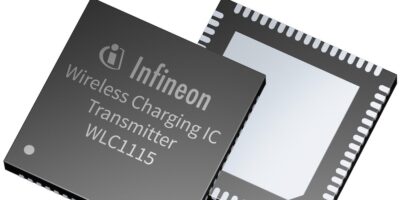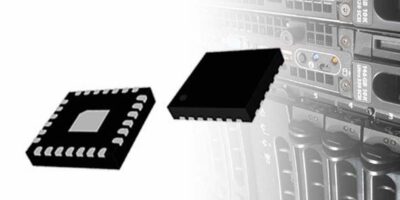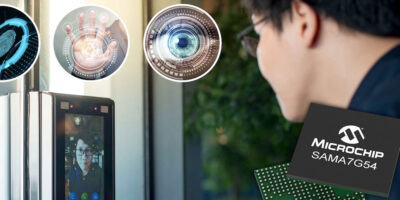At Computex in Taipei, Taiwan this week, Infineon has introduced the WLC integrated and scalable wireless charging platform.
The WLC1115 transmitter controller IC is the first product of the WLC family of controllers for inductive wireless charging. Infineon has also introduced an accompany Qi v1.3.2 certified MP A11 power transmitter reference design. The IC can be used for wireless charging in a variety of consumer devices, such as smartphones, smart speakers, docking stations and monitor stands, as well as industrial or healthcare accessories.
The WLC1115 transmitter controller IC and companion reference design for wireless charging can be used for a wide range of consumer and industrial applications that demand state-of-the-art Qi-standard compliance, explained Ajay Srikrishna, senior vice president and general manager of the Wired Connectivity Solutions product line at Infineon. “As inductive wireless charging standards evolve, our programmable solution will offer the flexibility to scale higher power levels and allow OEMs to materialise differentiated features while remaining Qi-compatible,” he added.
Infineon’s WLC1115 integrated, Qi-compliant, configurable 15W transmitter controller IC includes a USB-PD/PPS sink, DC/DC controller, gate drivers for DC/DC, a full-bridge inverter, sensing peripherals and configurable flash memory. It supports a wide input voltage range (4.5 to 24V), multi-path voltage- and current-based ASK (amplitude shift keying) demodulation. It also features an integrated, programmable, high-side current-sense amplifier and adaptive foreign object detection (FOD) via Q-factor, resonant frequency and power loss.Protection features for under-voltage lockout (UVLO), over-voltage protection (OVP), over-current protection (OCP) and over-temperature protection (OTP) are programmable.
The WLC1115-based Extended Power Profile (EPP) transmitter uses Optiga Trust Charge to meet the authentication requirements specified in the Qi v1.3.2 standard.
Infineon also provides software tools that support Qi v1.3.2 and proprietary charging protocols.
The Infineon WLC1115 transmitter controller IC is available now.
Infineon is presenting at Computex (24 to 27 May 2022) in Taipei, Taiwan. Visit Infineon at Computex, Hall 1 – 412.







